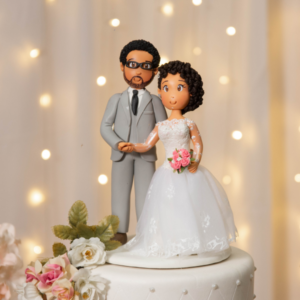Understanding Borderline Personality
In the world of relationships, figuring out Borderline Personality Disorder (BPD) and how it messes with love lives is crucial. Let’s unpack what BPD is and how it throws a wrench in relationships.
Characteristics of BPD
Folks with Borderline Personality Disorder often wrestle with who they are and how they feel, which results in some seriously wild emotional rides. As noted by Harmony Hills, people with BPD tend to fear being ditched, leading to mood swings, impulsiveness, and rocky relationships. Loved ones might find themselves loved up one minute and pushed away the next, creating a roller coaster that’s both exciting and exhausting.
When dating someone with BPD, you might witness unpredictable behaviors like unexpected anger or impulsive decisions, which can leave you feeling like you’re on a merry-go-round of confusion and fatigue. It helps to remember that these actions often come from a place of deep-rooted fear rather than deliberate intent to harm.
Impact on Relationships
The mark BPD leaves on relationships is huge, affecting everyone involved—be it the person dealing with BPD or their partner. As noted by Circles Up, ties with someone suffering from BPD can be an emotional see-saw, swinging between closeness and crisis. While there’s a deep yearning for connection, the looming fear of loss often prompts chaotic and sometimes harmful actions.
Partners might feel like they’re riding an emotional roller coaster, dealing with the whirlwind of emotions and behavior changes that come their way. This habit of going from singing praises to being critical can create an uncertain vibe that hangs over the relationship.
Learning to talk things through and getting help is important for both people. Setting limits, understanding each other, and showing empathy are all big musts to maintain a relationship where BPD is part of the package. Getting a grip on behaviors linked to BPD and reacting with kindness and patience can dial down fights and make the relationship stronger.
Insights into Narcissistic Personality
Peeking into the narcissist and borderline relationship dynamic means getting a grip on the habits and quirks that come with Narcissistic Personality Disorder (NPD).
Traits of NPD
Folks with Narcissistic Personality Disorder tend to have a big ol’ opinion of themselves, always fishing for compliments and not too concerned about other people’s feelings. Based on what Duke Health says, these quirks usually show up a lot, messing with relationships left and right. The SPECIAL ME checklist explains it best:
| NPD Traits |
|---|
| Superiority |
| Power |
| Entitlement |
| Control |
| Intrusiveness |
| Alienate |
| Loyalty |
| Manipulation |
| Exploitation |
Mental health pros use these traits to figure out if someone has NPD—basically, if a person shows five or more during a clinic chat, that’s a red flag (Duke Health). Because they think they’re the bee’s knees and deserve a VIP pass to life, they often have a tough time keeping relationships steady.
Behavioral Patterns
NPD doesn’t just chill in the background; it jumps into stuff headfirst, making social interactions a bit tricky. Here’s what they get up to:
-
Manipulative Behavior: Using situations and people like puzzle pieces to get what they want.
-
Lack of Empathy: Feeling others’ feelings? Not high on their list. Which keeps them stuck on their island of misunderstanding.
-
Sense of Entitlement: They think they’re a big deal and reckon they deserve better than everyone else.
-
Need for Constant Validation: Everything they do screams, “Tell me I’m awesome!” It’s how they hold their self-image together.
-
Difficulty Accepting Criticism: If you point out their flaws, you might as well take a sledgehammer to their ego.
Seeing how these traits play out helps explain why drama flares up when someone with NPD is dating someone with Borderline Personality Disorder. You can peek into more of the snags and sparks of the narcissist and borderline romantic relationship but spotting these quirks and habits is a good start.
Relationship Dynamics
Tangled in a push-and-pull saga, the interactions between someone with Narcissistic Personality Disorder (NPD) and someone with Borderline Personality Disorder (BPD) can be a rollercoaster of emotions. Getting a grip on what drives these attractions and emotional upheavals helps to lift the curtain on the power plays and battles for control that often define these intense bonds.
The Attraction and Clash
Folks with NPD might find themselves utterly intrigued by the whirlwind vibe of those with BPD. It’s like trying to solve a jigsaw puzzle that’s missing a few pieces but promises the satisfaction of making you feel all-knowing once you crack it. The narcissist sees themself as the fixer, the knight in shining armor coming to mend the perceived cracks in the BPD’s life (Quora).
Meanwhile, those with BPD might stick to a narcissist like glue, riding the emotional highs and lows in a quest for that ever-elusive love and approval. They buy into the narcissist’s charm, unable to resist the pull of their elusive promises, which turns into a gripping addiction that’s tough to shake off.
Control and Manipulation
Predictably, control and manipulation become the order of the day in these relationships. The individual with NPD often holds the reins, using the BPD’s vulnerability as a pressure point. Even when the ride gets rough, those with BPD might hang on tight, driven by the hope for affection or approval. This back-and-forth fosters a perilous dependency, marked by emotional chaos.
Research indicates that flipping the script in therapy ain’t a walk in the park for people grappling with both BPD and NPD. The stickiness of these traits, plus a reluctance to see how their actions mess things up, can make it super tricky for any real change to take root. It’s like trying to escape quicksand—the harder you fight, the deeper you get sucked in.
Grasping how these relationships work can turn on the lightbulb for many caught in these webs of emotion. By spotting the sneaky patterns of attraction, clash, control, and manipulation, it’s possible to reach out for a lifeline, set firm limits, and start unraveling the toxic patterns to pave the way for healthier, more satisfying connections.
Co-Occurrence of BPD and NPD
Relationships get tricky when Borderline Personality Disorder (BPD) and Narcissistic Personality Disorder (NPD) mix. The combo of these can make things wildly complicated. Getting a handle on why these disorders clash is super important for sorting through the mess and avoiding flare-ups.
Challenges in Management
Folks with BPD often have emotions that change like a Texas storm. One minute they’re all heart-eyes for their partners, and the next, they’re throwing shade. People with NPD, on the flip side, tend to think they’re the best ever, usually aren’t great at empathy, and need way more praise than most people. Put these traits together in a relationship and you’ve got fireworks—constant misunderstandings, drama, and maybe even a few mind games.
Getting mental health support like therapy is non-negotiable if you want to deal with this chaos. Therapy helps people pick up better tools for handling their stuff, talk openly, and keep their feelings from running the show. Setting limits and keeping an eye on your own actions are must-dos for riding out the kind of issues these disorders bring when they hook up.
Interactions and Conflicts
When BPD and NPD meet, it’s like oil and water trying to mix. BPD’s big feelings and doubts collide with NPD’s self-focus and never-ending need for a thumbs-up. This often spins into power plays, manipulation, and a dizzying back-and-forth of praise and blame.
A chill home environment can be a huge help, especially for those dealing with BPD, making improvements happen a bit faster than if things are constantly a mess. But if both folks in a relationship have a mix of BPD and NPD traits, it takes a lot of patience, a desire to understand, and a load of personal growth to make it work.
By tackling the challenges and understanding the wild ride that is a BPD and NPD relationship, people can aim for better boundaries, honest conversations, and the right kind of support to steer through these tricky waters.
Seeking Support and Solutions
When you’re caught in the whirlwind of a relationship tangled up with narcissistic and borderline traits, getting some backup and figuring out what works for you can make a world of difference. We’re talking about two main things here that might just help you breathe a little easier in such relationships: therapy for those dealing with BPD and NPD, and laying down some solid boundaries.
Therapy for BPD and NPD
Trying to manage a gig where both Narcissistic and Borderline Personality Disorders are playing center stage isn’t a walk in the park. You’re gonna need a whole toolbox here, and therapy is a biggie. Getting some one-on-one or group headspace with a therapist can arm you with strategies to navigate the tricky waters of your relationship. It’s an eye-opener for understanding how these personality cocktails mix and impact you, helping you figure out whether to embrace or adjust the relationship’s direction (Check it out here).
For those wrangling with BPD, therapy can be a game-changer. Approaches like dialectical behavior therapy (DBT) can be like teaching old instincts new tricks, enabling folks to handle relationship curves more smoothly and form deeper connections (More insights here). If your partner’s up for it, supporting their therapy journey can mean opening doors to growth and better communication.
Establishing Boundaries
Boundaries? Let’s talk real talk. Setting them is like putting up a picket fence around your emotional garden when you’re with someone maneuvering through BPD or NPD. Clear communication and knowing what’s a no-go for your sanity are key (More about that here). You’ll need to spell out which behavior’s a deal-breaker and why it’s crucial for the relationship to move to healthier grounds.
Boundaries aren’t just about taking a stand; they’re about protecting your peace and creating a space where both parties respect each other. When you keep reinforcing what’s acceptable and tackle boundary-crossing with calm assertiveness, you help guard your heart against emotional stress and keep your autonomy intact. Mutual respect and steady boundaries are like a safety net amidst the rollercoaster of BPD and NPD dynamics.
Mixing therapy with strong boundaries ain’t just about riding the storm; it’s about setting the stage for understanding, growth, and a touch of stability in relationships tossed around by the winds of complex personality dynamics. By supporting mental well-being and holding steady boundaries, you handle these relationships with resilience and a bit of clarity.
Breaking the Cycle
Nobody said it’d be smooth sailing when you’re in a relationship involving a narcissist and someone with borderline personality disorder (BPD). The emotional roller coaster of ending these relationships and the rocky road to recovery is something both parties have to deal with.
Struggles in Ending Relationships
Breaking up isn’t easy, especially when you’re with a narcissist or a person with BPD. You might feel like you’re walking on eggshells or even taking the blame when things go sideways. Folks with BPD might flip out or throw verbal darts your way, making you wonder if you’re the one in the wrong.
But enough’s enough. It’s time to lay down the law and set some ground rules. Let them know what’s not gonna fly if there’s gonna be any chance of turning the relationship around (WebMD). Stay strong with these rules even when the going gets tough. You gotta build a sturdy base of respect and understanding (WebMD).
Recovery and Moving Forward
Once you’ve jumped ship from a relationship with a narcissist or someone with BPD, the next step is all about recovery. Therapy can do wonders—getting into dialectical behavior therapy (DBT) might give you some handy tools for dealing with stress and interactions like a pro. It’s important to notice when you’re doing things better, both for yourself and others in the relationship.
Moving forward’s no walk in the park. You’ve got to look in the mirror, take care of number one, and maybe even chat with a therapist to tackle any leftover emotional baggage. Finding that peace of mind and healing is your own personal hike, with plenty of patience, understanding, and a good pinch of self-care needed on the trail.
In the twisted world of narcissist and borderline relationship dramas, shattering toxic cycles and rediscovering your worth and emotional balance is a must for healthier love stories in the future. By facing the battle of ending these heartaches and embracing the steps to healing and growth, folks can gear up to bounce back and grab hold of brighter, more fulfilling futures.




